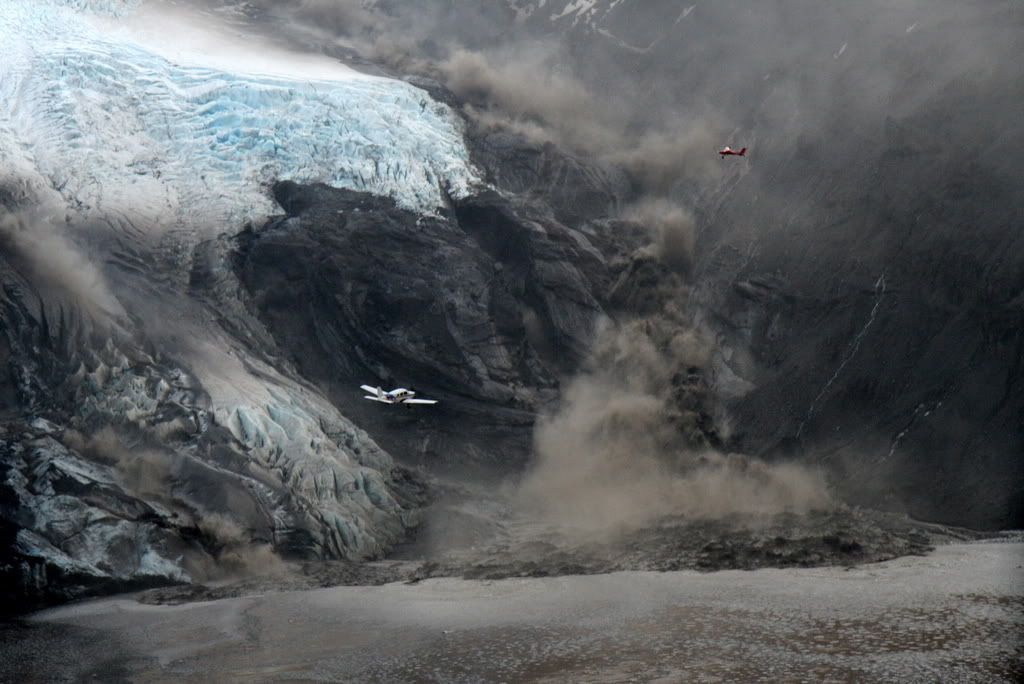
The eruptive plume from Eyjafjallajökull taken Holsvelli webcam. Image courtesy of Mattias Larsson.
Sorry to disappoint everyone visiting to blog while they sit at any number of airports around the world, but the eruption at Eyjafjallajökull appears to still be going strong. The Icelandic Met Office is heading up to the volcano to conduct a survey of the crater area to find out (1) what it looks like and (2) how much new water (i.e., ice) is there available for the erupting magma. More water is likely to mean more explosive eruptions in this phreatoplinian style - however, like I mentioned yesterday, the bulk andesitic composition of the ash implies it might have a decent ability to produce explosive eruptions without a lot of extra water (but it helps). You can see a great sequence of images from the eruption on this video (although the music might not be the most fitting). It shows the "puffing" nature of the eruption, which might imply periods of melt water getting into the conduit and flashing to steam (very loosely like a geyser behaves). The Icelandic Met Office continues to have excellent information on the ash and the flooding, which has been somewhat forgotten in the news. There has been extensive flooding around the volcano due to the melting ice.
The flight distruptions around Europe continue, now spreading south across most of Germany and into Italy - in all 23 European nations have total or partial flight bans. However, the ash continues to fall across England, so only limited flights are being permitted. The ash right now is estimated to be costing the airline industry $200 million dollars per day and even causing disappointment to fans of running and music. Remember, ash can destroy jet engines, as happened this week to an Finnish F/A-18 that flew into the ash - and this ash was so dilute in the air that it went unnoticed. The pictures of the damage to the engine are quite impressive. The latest ash dispersal models from the London VAAC have the ash spreading over most of northern and central Europe into Russia as the weekend progresses. The ash in Iceland itself is especially impressive as well, turning day-to-night under the main plume.

Daring pilots approaching the melting glacier near Eyjafjallajökull eruption. Torrents of meltwater can be seen in the background from the melting glacier.
Eruptions readers have collected quite a bounty of excellent images from the eruption (thank you all!), so here are links to some image collections. Be sure to check out some stunning images of the eruption and lightning in the ash plume at night taken by Marco Fulle over at Stromboli Online. As usual, be sure to check out the webcams available near the volcano.
UPDATE 1: Here is a recap of the explosive phase of the Eyjafjallajökull eruption from the Nordic Volcanological Centre:
UPDATE 2: And here is a site set with all sorts of remote sensing data on the eruption, put together for IAVCEI by Simon Carn.
